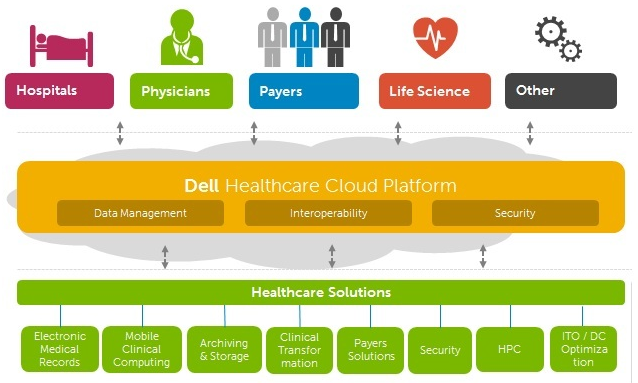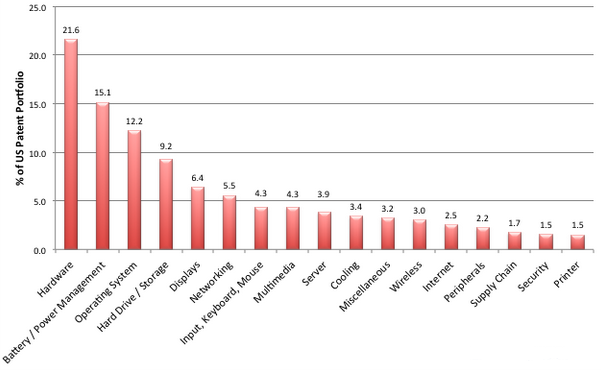Dell SWOT Analysis
SWOT is an acronym for strengths, weaknesses, opportunities and threats related to organizations. The table below contains a brief illustration of Dell SWOT analysis:
| Strengths
1. Charismatic and effective leadership by Michael Dell 2. Market leadership in corporate usage. 3. Leadership in cloud 4. Leadership in healthcare sector |
Weaknesses
1. Lack of patents for breakthrough innovations 2. Long purchasing process 3. Extensive dependency on suppliers 4. Limited differentiation of products |
| Opportunities
1. Investment in research and development 2. Engaging in mergers and acquisitions 3. Increasing presence in tablet and smartphone market 4. Concentrating in emerging markets |
Threats
1. Data security 2. Competition from emerging economies 3. Economic crisis 4. Decline of desktop and laptop market
|
Strengths
1. The company’s founder and CEO Michael Dell is a respected business leader around the globe. Michael Dell’s reputation is not constrained within consumer electronics industry and he is the first UN Global Advocate for Entrepreneurship. Starting the business in 1984 at the age of 19 from his freshman dorm room in the University of Texas, Michael Dell has been the main driving force behind the rapid growth of the business. Michael Dell stepped down as CEO in 2004 and had to return to the role in 2007 due to the decline in financial growth and the overall customer satisfaction. Michel Dell’s return has been marked with the company regaining its leadership position in the market proving his value as one of the most important assets of the business.
2. Dell products and services are popular among organizational consumers from both, private and public sectors. Dell products are used by 98% of Fortune 500 Companies[1] and 90% of Fortune 1000 companies use Dell software. It has been estimated that around 10 million small business owners function with Dell globally[2]. By the end of 2014, Dell has experienced 9 consecutive quarters of market share gains for its PCs and 6.8 million students in 295,000 classrooms use Dell[3].
3. Dell is in the leadership position among direct competitors in terms of storage capacity and it is highly competent in big data architecture. In 2015, Dell has revived its strategic collaboration with integration software provider Syncsort Inc. to further increase its presence in data architecture segment[4]. A new reference architecture developed by Dell offers valuable technical assistance for businesses in terms of improving operational efficiency, reducing costs and leveraging advanced analytics.
4. The company is the leading IT provider to gene sequencing researchers and it has been acknowledged as the leading healthcare services provider in general 6 years in a row[5]. Moreover, 7 out of 10 top pharmaceutical companies use Dell Specific Platform, more than 100 hospitals in the US rely on Dell services and more than 131 million clinical studies are stored in Dell Cloud[6]. As it is illustrated in Figure 1 below, healthcare solutions offered by Dell covers a wide range operations such as managing electronic medical records, mobile clinical computing and clinical transformation.
Figure 1Dell’s Unified Clinical Achieve Solution[7]
Weaknesses
1. Compared to its major competitors such as Apple, Samsung and Hawlett-Packard, Dell lacks patents for breakthrough innovations in its portfolio and this fact has negative implications on the level of revenues. As illustrated in Figure 2 below, as of March 2013, Dell’s patent portfolio comprised only 21.6% of total patent portfolio in the US in hardware, despite the leadership position of the company in the US market and hardware being its core business. Similarly, technology patents in the US possessed by Dell related to displays and servers amount to 6.4% and 3.9% respectively, illustrating a clear weakness of the brand. It is strategically important for Dell to expand its patent portfolio to a significant extent in order to be able to sustain its leadership position in the long-term perspective.
Figure 2 Dell’s US Patent Portfolio technology breakdown[8]
2. Dell boasts that each product is custom-built according to customer specifications and attempts to position this fact as one of the core competitive advantages of the business. While the opportunity of having their computers custom-built according to their needs, wants and unique circumstances is appreciated by many customers for evident reasons, this strategy may alienate certain customer segment who are not knowledgeable about computers and specifications of products they want to buy. Moreover, necessity to wait certain duration of time for custom-built products can be specified as an additional weakness associated with the purchasing process of Dell products.
Detailed discussion of Dell SWOT analysis and application of PESTEL, Porter’s Five Forces and Value-Chain Analyses on Dell can be accessed via purchasing Dell Inc. Report. The report also comprises analysis of Dell’s marketing strategy and company’s approach towards Corporate Social Responsibility (CSR).
[1] Annual Report (2015) Dell Inc.
[2] Annual Report (2015) Dell Inc.
[3] Annual Report (2015) Dell Inc.
[4] Wheatley, M. (2015) Silicon Angle, Available at: http://siliconangle.com/blog/2015/06/17/syncsort-dell-reference-architecture-to-accelerate-hadoop-etl-offload/
[5] Annual Report (2015) Dell Inc.
[6] Annual Report (2015) Dell Inc.
[7] Source: IMVirus, Available at: http://www.imvirtus.com/site/blog/detail/2012/12/12/dell-clinical-cloud-archive.html
[8] Mustafa, F. (2013) Patent Vue, Available at: http://patentvue.com/2013/03/14/dell-patent-portfolio-could-be-leveraged-after-buyout/



